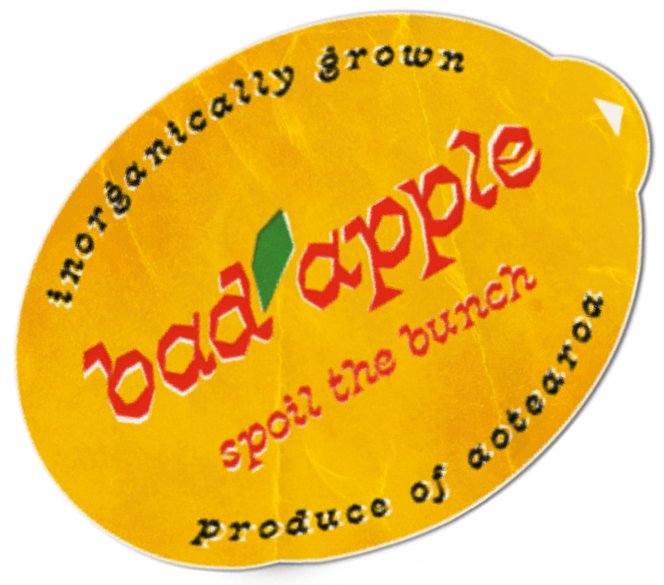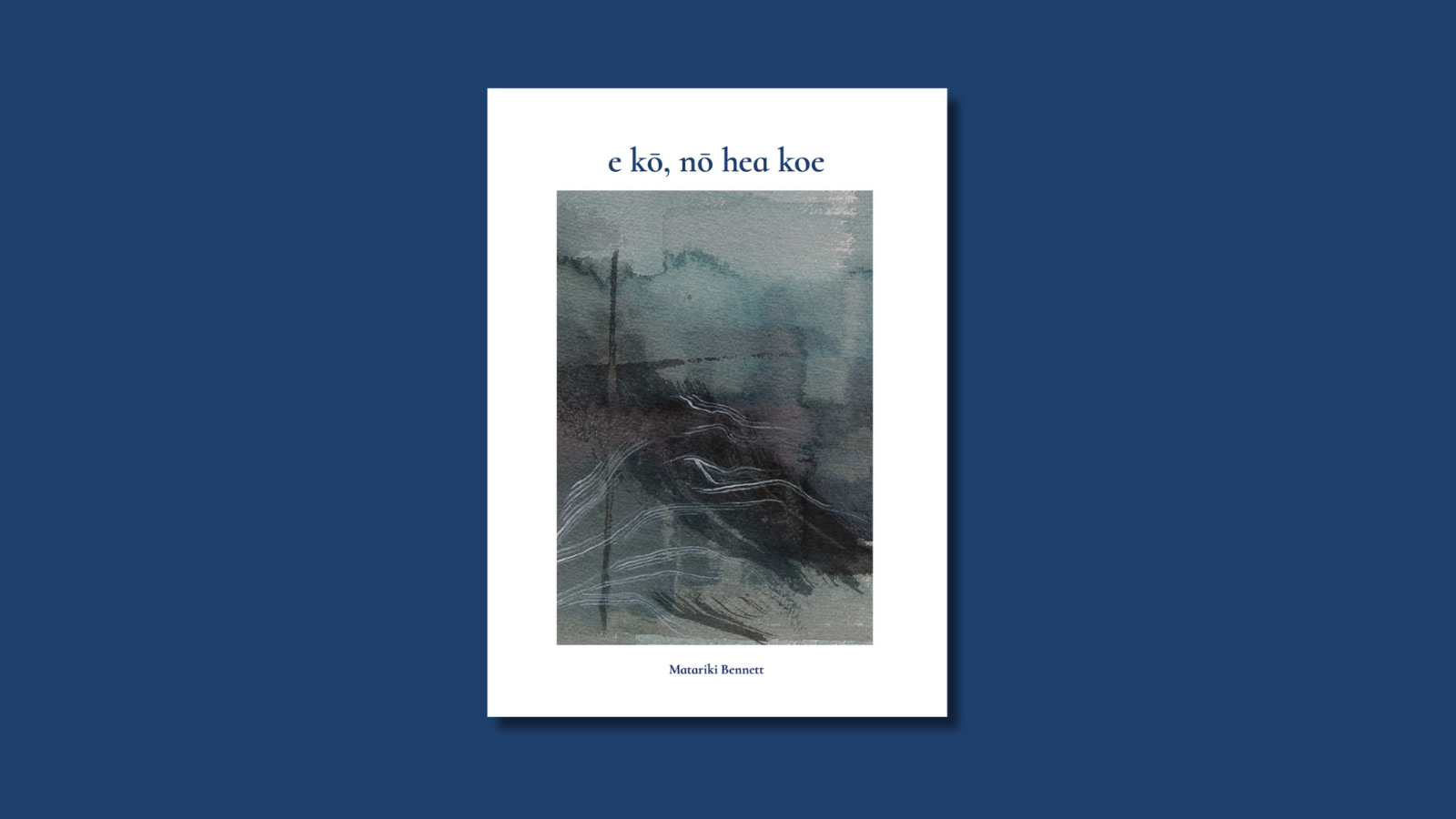E kō, nō hea koe?
That’s the question that echoes literally and figuratively through the debut collection of poems by 22-year-old poet and writer Matariki Bennett (Ngāi Pikiao, Ngāti Whakaue, Ngāti Hinerangi). The book is the latest offering from Dead Bird Books (having previously published some amazing writers, including Samuel Te Kani, Isla Huia, Dominic Hoey, etc). It marks a new chapter for Bennett, who has been making waves in the world of storytelling since she was just a teen, as part of the slam poetry collective Ngā Hinepūkōrero.
sometimes
we forget where we’re fromso we make homes out of each other
I was so excited to read this collection, from a writer who has already offered so many beautiful things to the collective story of urban Māori rangatahi. e kō, nō hea koe explores the many complex facets and stories of how Bennett came to be—that recurring question of belonging, explored through aesthetics of the urban life, the mystical, the surreal. Explored through the voices of Bennett as the protagonist, as well as the voices of people in her life.
There is a kind of world-building in this pukapuka that will resonate with readers of contemporary indigenous writing. Bennett illuminates the internal world of a young urban Māori person within a far more ancient landscape. That landscape is Aotearoa, our tūrangawaewae, whose foundation is built on mauri, wairuatanga and ancestorship. In this world, Frank Ocean’s Channel Orange is on the stereo in the car and a taniwhā occupies the waters nearby.
It reflects a deep-held understanding of our pūrākau and an experience of the wairuatanga that sits in the hearts and minds of indigenous people. It tells those stories in an aesthetic that flirts with sci-fi and fantasy. It reminds me of the work of writers such as Amber Esau, Kōtuku Titihuia Nuttall, essa may ranapiri, Tayi Tibble, Robert Sullivan. It also reminds me more broadly of lots of the speculative fiction works of indigenous writers in Te Whenua Moemoeā—collections like This All Come Back Now curated by Mykaela Saunders. That’s not to say this collection is fictional, but that flirting with the otherworldly was a super resonant part of Bennett’s storytelling here. It’s an aesthetic and tool that I think weaves beautifully into the wider thought-movement of indigenous futurisms across storytelling, academia and art. Such futurisms hold space for hope and for all of the potential futures we are navigating as indigenous people—and it’s super nourishing.
Works like e kō, nō hea koe are blossoms emerging from those first seeds of the Māori renaissance, out of the kōhanga reo generation, the reclamation of indigenous sovereignty. Poems like ‘koro’ and ‘kāwana, ka whakamanuwhiritia koe e au’ situate Bennett in relation to that renaissance. At times, there is a confident sense of identity, a cultural strength embodied in how Bennett retells the stories of her whānau. At other times, there is a sense of vulnerability, a sense of ‘Am I Māori enough? Am I connected enough?’ All of which feels authentic and true to what it means to be a rangatahi today.
Additionally, there is also a gorgeous and necessary sense of growth as the book progresses. This pukapuka is split into seven sections, and in each, I felt the poetic voice mature and change. The first section—‘too satellite to be star’—feels youthful. It reminded me of my own late teens and early twenties:
i am three dreaming of a sun glowing out of my skin
together we roll backwards over and over like a walking globei am sixteen blazing in gods light
It is the world of a young person who feels simultaneously so vulnerable and so invincible— radiant and nostalgic in the style of Lorde’s teen anthem ‘Ribs’. A world textured in ‘rothmans and rockstars’.
After introducing us in the beginning to that youthful, magical world, Bennett starts to take us on a journey. The central sections, ‘iho ngaro’ in particular, introduce the voices of other characters in Bennett’s life. The stories of members of Bennett’s whānau, the stories of the land, the stories of memories—experienced and inherited. Bennett retells these stories with a sense of curiosity. There’s an exploration of whakapapa, the wounds of colonisation and disconnection, spirituality and the tohu that guide us.
In the final poems of the book, it feels like the voice of the poet is fully realised. There is a sense of having absorbed and interrogated all of those complicated youthful feelings about connection and identity, a swampy marshy land, and to have settled again on solid ground. There is a gentle articulation of self, and a soft anger in ‘he ahi kei taku korokoro’ and ‘hiwa’ that feels both humble and righteous (aka very Māori).
we have always known where we come from
we have always known each other
That growth in the narrative voice feels hopeful, echoing again the aesthetic of indigenous futurism, which often delves into the icky-sticky and comes out the other side with a confident sense of the stories handed down, and the stories still to come.
It’s the kind of work that I think is very much fed and nourished by key events in the timeline of Aotearoa. There are those big ones like Te Tiriti, and the early renaissance, but also in the last ten years, events like the protection of Ihumātao, which added fuel to the already ravenous fire of the current generation of young Māori creatives. (See: Tayi Tibbles 2019 essay My visit to Ihumātao as an urban Māori millennial). All of which is to say that as someone who also circulates in the bright, oceanic pools of urban Māori creativity, it feels like this book echoes a thousand conversations and thoughts that I myself have had. That we all have had. In that there is a spell of binding together, and the magic of connection and revolution.
e kō, nō hea koe is a gorgeous offering to our collective wānanga. E te tuahine, ka nui te mihi!



